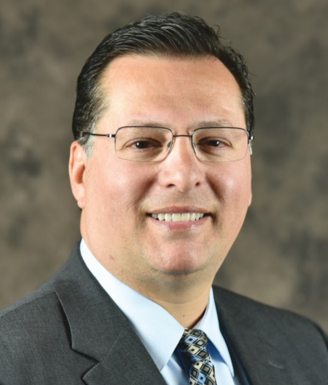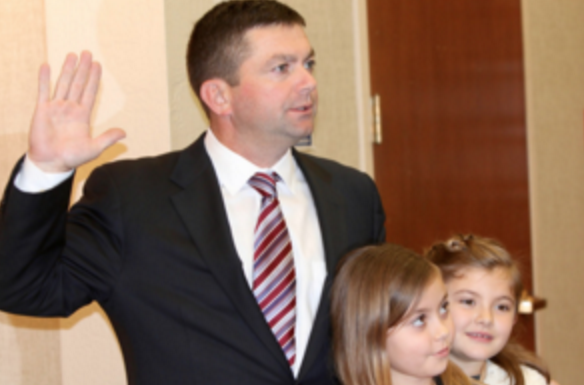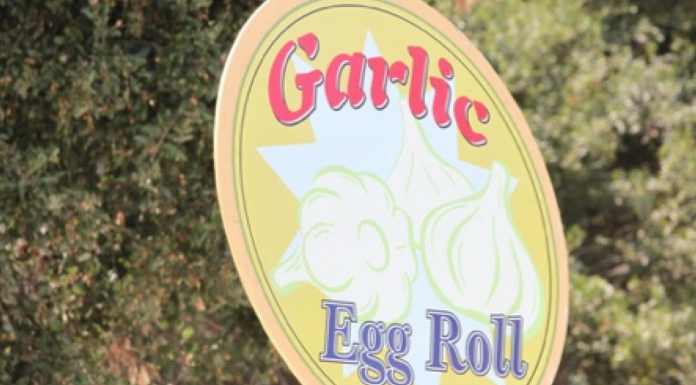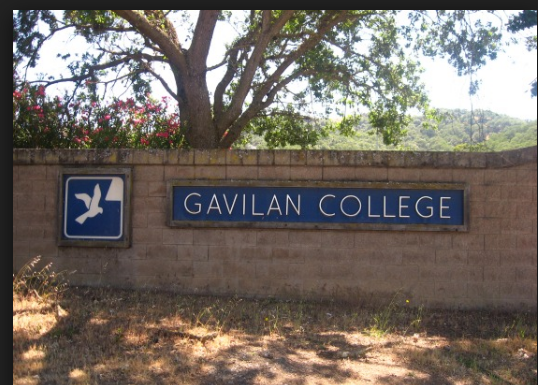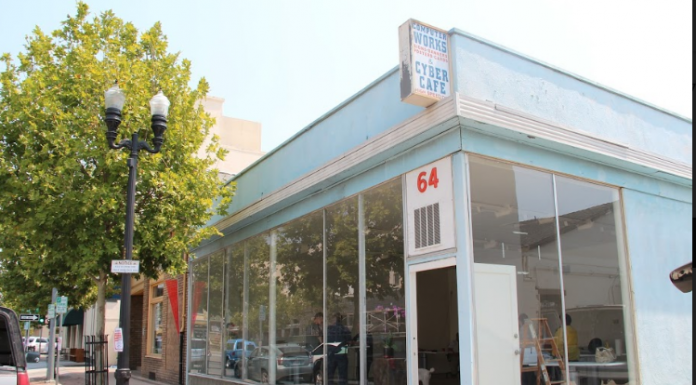Editorial: The Upside of the Election
It’s hard not to think that Gilroy and the state of California are in a different country than the one that swept in a strong Republican, anti-government agenda.Gilroyans took a hard liberal bent and chose to cut sprawling growth out of the city limits and focus on downtown development. It elected a slate of slow-growthers and tossed out those who tried to sneak by a 4,000-house project that would have increased traffic, raised public service expenses and made its developers $3 billion.County voters favored Hillary Clinton by 73 percent. They beat back the “no tax” trend by increasing fees on cigarettes to fund health programs and increased sales tax to improve transportation. They raised money for the homeless. They funded schools. They pushed back on the exorbitant prices charged by drug companies.Those are huge positives in a national election that seemed to rip the fiber of the country apart.California’s voting trend this time around suggests that if you want to return to a time when America was great, you can look to the 1950s to the 1970s, when people were proud to pay taxes to improve their country. Tax rates on the rich were as high as 90 percent. The rich were still incredibly rich, but they were willing to do their share. Then came the trickle-down theory, which never quite trickled down. This week local voters took bold steps back to the days when people were far more willing to take responsibility for their circumstances and were willing to pay to make thecounty and state great again.Americans may never again experience a campaign season like the one that ended Tuesday—or might they all be like this from now on?The historic nature of the election, the first one where Americans got to vote for a woman as the presidential nominee of a major party, was almost lost during 16 months of daily scandal and insults.News outlets on both ends of the political spectrum, from Fox to MSNBC and innumerable blogs in between, kept Americans hooked, transforming those who were never politically expressive into keyboard pundits, posting their thoughts on Facebook and Twitter.While Barack Obama’s presidential runs in 2008 and 2012 were touted for their use of data and technology, social media came into its own during election 2016, invigorating the electorate like never before.Sure, some Facebook friends were lost in the shuffle, but now as the dust settles, Americans should look to harness some of that energy and enthusiasm and continue to find ways to participate and engage with our nation’s brazen and brow-beaten democracy.Here’s one suggestion: start attending your local City Council and municipal commission meetings. Make it a habit. Usually, the only time people go is when they have a problem, a mission, or are on the agenda. A crowded council chambers says something to elected officials: We are here, we are watching, we care.Better yet, take some time and join local commissions. Become the solution. Get involved. Take control of your government.Both Trump and, during the primaries especially, Bernie Sanders decried our nation’s “rigged” system, basically saying that ordinary citizens have no hope whatsoever of changing the course of their own lives let alone the country’s.Don’t get fooled, get involved.
Endorsement: Velasco for Mayor
Roland Velasco has been on the right side of campaign finance, economic development funding and sensible, balanced development; Woodward has been on the wrong end of all three.
Editorial: Can We Trust Perry Woodward?
The bizarre events of December 2015 will be long etched in Gilroy’s political history. Mayor Don Gage stunned the city by resigning without warning a year before his term ended, effectively handing the reins to his political ally, Perry Woodward. The handoff allowed Woodward to run as an incumbent—but not before the duo pushed through approval of a massive farmland annexation that would have, along with other planned developments, made Gilroy one of the Bay Area’s biggest cities—a sprawling urban mass of 120,000 residents, more than double the city’s population today.
Editorial: Who is a Gilroyan?
It’s a question that has been taken up, sometimes quite offensively, on social media sites recently. We’ve watched some attacks against Mark Turner, president of the Gilroy Chamber of Commerce, because he is against Measure H, which would put voters in charge of limits on growth rather than leaving it to elected officials.They condemn him for being from Morgan Hill, as if suddenly, a man who has put his life into Gilroy for 14 years doesn’t qualify to have an opinion.In fact, you’d be hard pressed to find someone more involved in the community than Turner. Try going to any city event, weekday or weekend and not seeing him. It’s almost impossible.He was a pastor at South Valley Community Church starting in 2002 and took over the Chamber in 2013. He’s been a fundraiser and auctioneer who has raised $250,000 for Gilroy nonprofits.He started the Bread of Life program to distribute food from local grocery stores to needy locals. He received a Community Hero award in 2007 from a Glenview neighborhood group and the Community Leadership Award in 2016 from the local American Legion Post. He’s the head of the Gilroy Police Foundation. He eats most of his meals in Gilroy and does most of his shopping here.The online attacks on Turner beg a question: with 80 percent of residents here commuting to work in Silicon Valley and spending 40, 60 or 80 hours a week there and others, like Turner, spending most of their time here, who qualifies as a real Gilroyan?We asked Turner for his opinion and we’ll be asking others. We’d like to hear from you as well on this issue.Here’s Turner’s answer:“One’s community is not necessarily confined to where one lives, but it has a lot to do with where one invests their time and effort. Every day 15,000 people commute out of town headed north for work in order to support their families and enjoy their lifestyle in Gilroy.“At the same time, there are those who don’t live in Gilroy but choose to work here, invest their time and resources here and do all they can to make Gilroy a better place. Are those who work here but don’t live here any less committed to Gilroy than those who live here and vice versa? “Of course not. All contributions to improve Gilroy and making it a better place for future generations should be welcomed.“The exchange of ideas, thoughts and opinions only advance the opportunities for a better community. Gilroy is fortunate to have dedicated community leaders who support local charities, serve on boards of local nonprofits, contribute financially to local causes, assist the underprivileged, patronize local businesses and invest their time right here in Gilroy. Many of those individuals don’t live here but have adopted this town as their own.“In the current debate about what’s best for Gilroy’s future, let the discourse occur in the public square or on whatever social media platform one chooses. But let that discourse be civilized. When those on either side of an issue choose the lowest form of expression by name-calling, belittling, intimidating and indicating one has no credibility because ‘one doesn’t live here,’ they simply discredit themselves and the cause they represent.“As Rick Warren once said, ‘We’re better together.’ When the dust of Measure H finally settles, we still have to work together for a better Gilroy. It will be much easier if we haven’t offended one another with vicious attacks and attempts to disgrace and dishonor each other.“I’m honored to have the opportunity to serve Gilroy, its people and its businesses and will continue to do so in the community I love and call my own.”
Opinion: Fix Community Colleges
It’s been three years since the board of directors of California’s 113 community colleges enacted its “if we don’t build it they won’t come” policy, and the results are plain depressing.In an effort to save money, the directors decided to prohibit students from repeating classes they’ve already taken, which to a bean counter might sound like a great way to cut expenses, but to someone who believes that the community should have access to community colleges, it’s plain stupid.Known as the “yoga mom’s regulation,” board members thought that too many community members were taking physical education, yoga and arts courses for $100 a semester, when they should be paying that each week to take courses in the private sector.So, cut they did and some 200,000 students who went to the schools for lifelong education dropped out. In the words of California Community Colleges Board of Governors President Scott Himelstein:“Budget cuts have forced us to ration education, and we are currently turning away hundreds of thousands of students from our campuses that want to pursue a degree, transfer to a four-year university or get job training so they can get back into the workforce or advance in their current career. It doesn’t make sense for us to allow students to take the same physical education course four times on the taxpayer’s dime while we are closing our doors on those looking for a degree or seeking job skills.”The problem is having to “ration education” at colleges that are supposed to serve the whole community.Himelstein says the taxpayers shouldn’t have to pay for people repeating courses, but the taxpayers are the same people who want to repeat the courses and continue learning for life and refining their skills, whether they are in music, arts, writing or yoga. They are already paying for them, often generously, by passing big ticket bonds to keep the education flowing.Attendance at Gavilan College has dropped since the cutbacks from a high of 9,064 in 2009 to 6,152 in the current semester. Some of the cuts include all of the non-credit courses for seniors, which were once the definition of a diverse college serving the entire community.And students at all of the schools aren’t happy with the limits. The public college system was one of the greatest things about California and now officials are letting it go to seed.Be warned: voters in some communities are starting to rebel. Santa Cruz taxpayers, who usually approve every bond measure the community district asks for, turned down a $310 million measure to improve old buildings at Cabrillo College. Who can blame them? Why add more to your tax bill when the school has closed its doors to you? You can use the money on private classes, as the state community college board suggests.We see this as the beginning of the end of one of the greatest educational systems in the world, unless voters get involved and urge their local districts to restore the lifelong learning opportunities that they had.The academic senate at Victor Valley College passed a resolution asking the state to return to the way it was, claiming that lack of repeatability “severely limits” the ability of students of visual and performing arts build the portfolios they need to transfer.The limits were put in place when schools were turning away students, but that isn’t the case now, they said. They are asking the state to restore programs that contribute to a skilled progressive workforce, “fostering a creative, innovative citizenry, capable of critical thought; promoting community, vision, health and lifelong learning; nourishing a diverse, multi-generational context in which all Californians can learn and grow.”The economy has improved since the dire times of the Great Recession. It’s time to stop the severe austerity and make our community colleges great again.
Record Crowd at Party in the Park
“This has been the best year yet,” said Christine Vatuone, CEO/executive director of pregnancy resource center Informed Choices, one of 25 community-based organizations distributing information at Party in the Park at San Ysidro Park on Aug. 12.Featuring a climbing wall, jump house, live DJ music, dance performances and an assortment of games and prizes for the kids, the final installment of the fourth annual event series aimed to beat its previous attendance record set last month, when 650 people strolled, cycled or drove to the eastside 9-acre park.“Two hundred and fifty was our largest attendance before,” said Brian Hames, coordinator of the event, which aims to create safe, community spaces in neighborhoods with a history of gang activity.“We want to raise awareness and provide information on the many resources that are available to people,” said Hames, adding the event was modeled after Los Angeles’ Parks After Dark and is similar to Viva Parks! in San Jose, a series of free public events that focus on health and wellness resources, physical activities, and community engagement.In a half-circle of tables around the handball courts were representatives from agencies including CalWorks, Planned Parenthood, Santa Clara County Re-Entry Resource Center and clinics providing free health screenings.Getting a jump on Attendance Awareness Month in September, employees of Gilroy Unified School District were also on hand, reminding parents to get their children back to school on the first day of classes and promoting “Challenge Five”—encouraging students to have less than five days of absence per year.Jennifer DelBono, GUSD program administrator for school climate and student attendance said the district is looking at ways of partnering with local businesses to incentivize student attendance and hopes to launch a program soon.“We have such incredible partnerships in Gilroy,” she said.Gilroy resident Michael Martinez said he’d been going to Fifth Street Live downtown on Friday nights this summer but decided to come to the park with his seven-year-old son, Brayden, now smiling widely with his new balloon hat and pirate sword, after seeing a flyer at soccer signups.Over at the face-painting booth, Hollister residents Emma Torres and husband, Gabriel, with their three kids, Emily, Andrew and Bianca, looked through their goodie bags.“There is a lot of good information about the local nonprofits,” said Emma, who saw the event notice in Out and About magazine and decided to check it out. “We all run into people that could use this type of help and if we have these resources, we can pass it on to them.”









